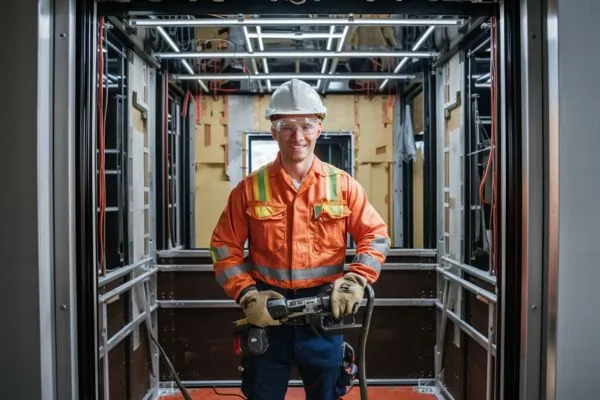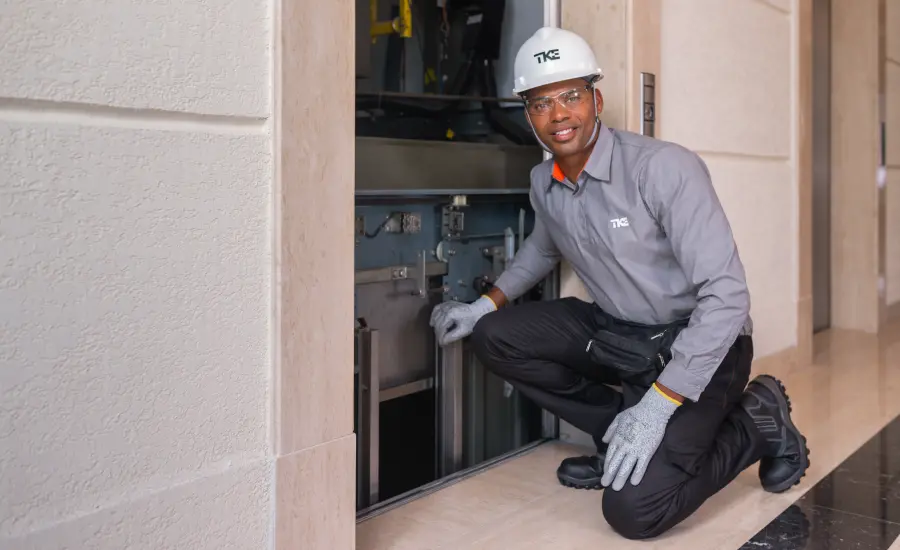Discovering the Comprehensive Procedures Needed for Lift Maintenance
In the world of building maintenance, making certain the proper performance and security of lifts is extremely important. By dealing with key elements such as aggressive maintenance timetables, safety checks, and emergency readiness, a detailed understanding of the intricacies entailed in lift maintenance can lead to improved performance and safety and security.
Regular Inspections
When it pertains to making certain the durability and safety of your lift system, regular assessments are critical. These regular checks play an essential role in recognizing any type of prospective issues before they rise right into significant issues, making certain the smooth and risk-free operation of the lift. By conducting regular evaluations, upkeep teams can proactively deal with wear and tear, malfunctioning parts, or any kind of various other problems that might endanger the lift's performance or safety and security.
Throughout these inspections, trained professionals extensively examine numerous aspects of the lift system, consisting of mechanical elements, electric systems, security functions, and general architectural stability (lift maintenance). They try to find signs of wear, rust, leakages, or any kind of anomalies that could indicate an issue. In addition, they confirm that all safety devices are functioning appropriately and in compliance with guidelines. By spotting and addressing concerns at an early stage, these assessments aid stop expensive fixings, downtime, or safety and security threats, eventually prolonging the lifespan of the lift system and guaranteeing the wellness of its customers.
Proactive Upkeep Schedules
Carrying out aggressive upkeep schedules is crucial for making best use of the performance and long life of lift systems. By sticking to a positive maintenance approach, lift owners can deal with prospective problems prior to they intensify into major troubles, inevitably minimizing downtime and expensive repairs.
A well-structured proactive maintenance schedule should lay out details jobs, frequencies, and responsible personnel. It is vital to comply with maker suggestions and industry standards when developing these routines to guarantee the lift operates safely and successfully. In addition, recording maintenance activities and keeping detailed records can supply valuable understandings into the lift's efficiency in time, assisting in making and determining patterns informed upkeep decisions.

Safety Conformity Checks
Ensuring safety conformity via comprehensive checks is vital in maintaining lift systems' reliability and protecting individual health. Safety conformity checks entail a thorough examination of various components, consisting of electric systems, mechanical components, emergency brakes, doors, and various other essential safety functions. These checks are necessary to recognize any kind of prospective risks or malfunctions that might endanger the lift's operation and placed users at threat.
Routine safety compliance checks need to be performed by certified professionals in adherence to market policies and requirements. These checks help in detecting issues early on, allowing for prompt repair services and preventative maintenance steps to see be applied. In addition, keeping detailed records of safety conformity checks is vital for tracking the lift system's efficiency with time and demonstrating compliance with safety and security regulations.
Devices Upgrades and Modernization
Enhancing lift systems with devices upgrades and modernization is important for boosting performance and security standards in upright transport. As technology advancements, older lift systems might end up being outdated, bring about reduced reliability and possible security hazards. By buying equipment upgrades and innovation, building proprietors can make sure that their lifts meet existing market criteria and guidelines.

Along with functional benefits, devices upgrades and innovation projects can likewise enhance the visual appeals of the lift, giving a more contemporary and enticing experience for guests. Ultimately, purchasing lift upgrades and innovation is an aggressive approach towards making certain the long life, security, and performance of upright transport systems.
Emergency Readiness Preparation
An effective emergency situation preparedness strategy is important for guaranteeing the safety and quick feedback in instance of unexpected cases including lift systems. Emergency situation readiness planning for lift systems includes an organized approach to minimize dangers, make certain passenger safety, and lessen downtime throughout emergencies.
Secret parts of an emergency readiness prepare for lifts consist of clear interaction protocols, regular training for lift operators on emergency situation procedures, and regular drills to test the effectiveness of the plan. lift maintenance. Furthermore, the strategy needs to detail specific lift engineer roles and responsibilities for all stakeholders entailed, consisting of structure management, upkeep personnel, and emergency situation -responders
In the occasion of a lift malfunction or entrapment, having a distinct emergency situation plan can help in coordinating a reliable and timely reaction to ensure the safety and security and health of travelers. Timely interaction, access to emergency equipment such as interaction gadgets and emergency lights, and expertise of emptying procedures are important aspects of a comprehensive emergency situation preparedness prepare for lift systems. By focusing on emergency readiness planning, building supervisors can enhance the total safety and security and reliability of their lift systems.
Verdict
Finally, the extensive measures needed for lift upkeep consist of routine inspections, aggressive maintenance timetables, safety conformity checks, equipment upgrades and modernization, and emergency situation preparedness preparation. These actions are necessary for guaranteeing the safety and security, dependability, and performance of lifts in numerous setups. By implementing these procedures, lift proprietors can reduce the danger of accidents, extend the life-span of their tools, and adhere to market laws.

Throughout these inspections, trained experts completely analyze various facets of the lift system, consisting of mechanical parts, electrical systems, security functions, and total architectural integrity.Guaranteeing security conformity via extensive checks is extremely important in maintaining lift systems' dependability and protecting user wellness. Maintaining thorough documents of safety and security compliance checks is critical for tracking the lift system's efficiency over time and demonstrating compliance with safety policies.
By prioritizing emergency situation readiness preparation, building managers can boost the general security and dependability of their lift systems.